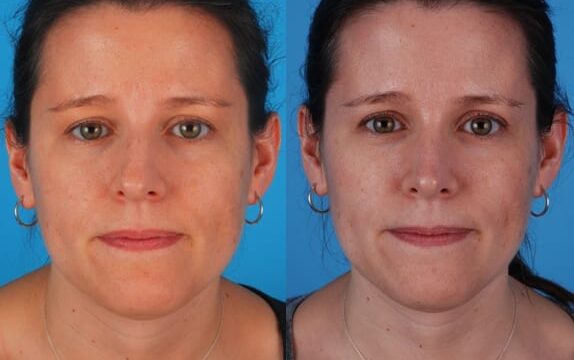HOW IT WORKS
The nose is perhaps the most noticeable feature on anyone’s face. It stands out as the central character on the face’s stage. It’s little wonder that rhinoplasty, or a nose job, is one of the most sought after cosmetic surgery procedures.
Such surgery is elective. Nasal reconstruction, on the other hand, although still dealing with the nose, refers to reconstructive surgery performed on the nose after an accident perhaps, or more commonly after a surgery, such as the removal of a cancerous tumor.
Unlike many cosmetic procedures, nasal reconstruction must look beyond just aesthetics and be sure that the structural integrity of the nose is kept intact so the nose’s vital breathing functions are maintained.
Reconstruction is typically undertaken at the earliest possible time since it may decrease healing time, prevent wound contraction resulting in deformity and provide the optimal aesthetic results.
Your doctor at Jefferson Facial Plastics may consult with the tumor removal surgeon before your surgery, or he may see you after sufficient healing has taken place, post surgery.
In any case, he will assess the wound, its location, breadth and depth, your skin condition and many other factors before deciding the best surgical procedure to use. If you were treated with radiation, he will need to assess if and how much it altered the shape of the nose and the perfusion (flow of blood) of the nasal tissues.
Initial Consultation
Before initiating any nasal reconstruction, your doctor will assess the areas mentioned above, plus the state of the skin, soft tissue and cartilage.
He must also assess the degree of openness (patency) of the nasal airway. Sometimes radical tumor removal surgery will compromise the nasal airway. Before undertaking any nasal reconstruction, your doctor must accommodate for this compromise and take whatever steps are necessary to correct it.
Failure to address nasal airway patency can result in problems which are much harder to deal with after reconstructive surgery.
The Procedure
Skin Grafting and Flaps
The most common method used to treat surgical wounds is the use of skin grafts or flaps.
This procedure consists of the harvesting of tissue from one part of the body and using it to reconstruct another, in this case, the nose. You can think of it as a transplant but, in this case, from your own body.
Your doctor can choose from a number of flap and skin graft methods. His choice will be dictated by your particular case. In every instance, his aim is to realize both functional and cosmetic success.
The introduction of flaps and grafts requires sutures to bond the new tissues and skin to the receptive area on the nose. Proper suturing technique ensures that your reconstruction is hardly noticeable, if at all.
Post-Surgery Care and Recovery
Your doctor will instruct you in how to care for the operative area during your recovery period. He will likely advise you use a medical grade ointment on a daily basis. If your sutures need to be removed, he will advise you when to return to the office for their removal.
He will schedule follow-up visits to assess the progress of your surgery. And, as always, your doctors at Jefferson Facial Plastics are available if you should have any concerns or issues during your recovery.

